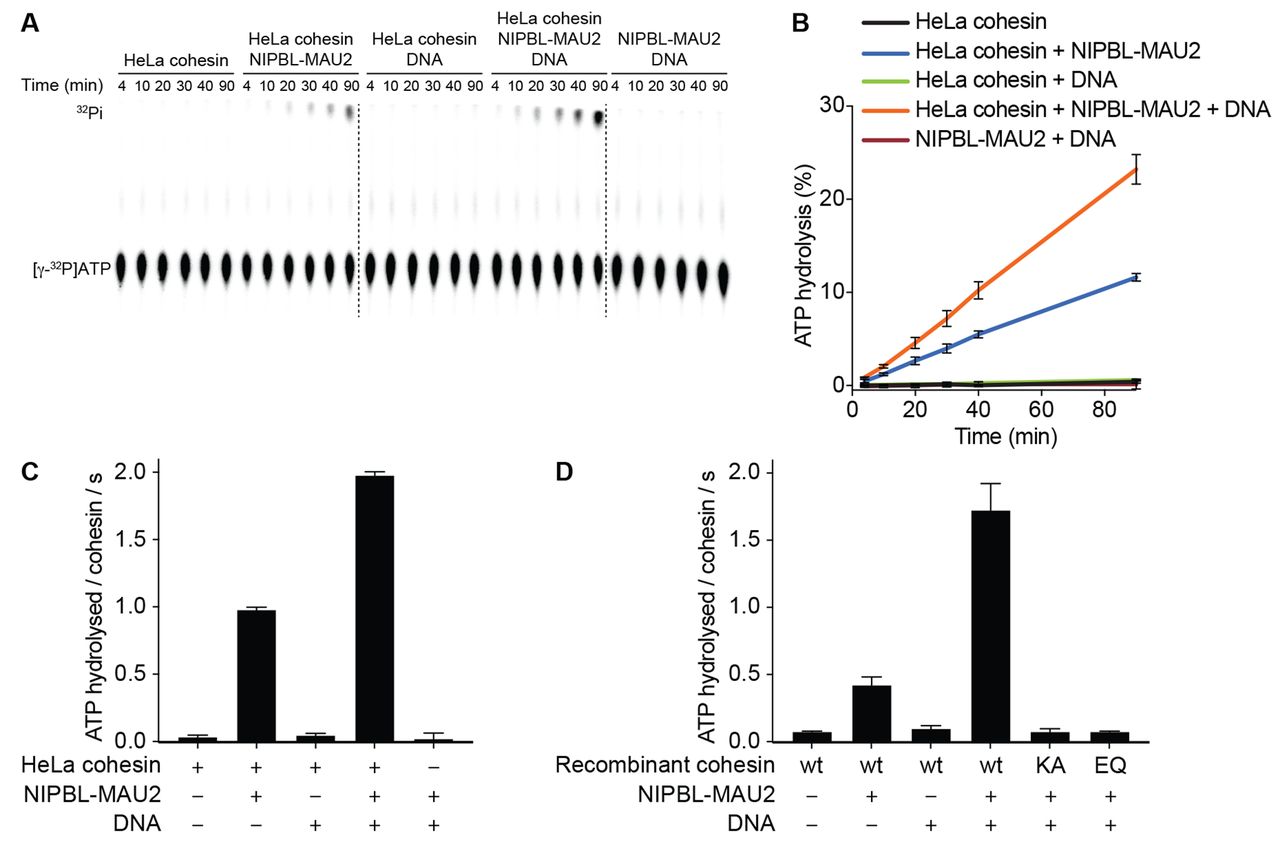
21 Nov 2019
Abstract
Eukaryotic genomes are folded into loops and topologically-associating domains (TADs), which contribute to chromatin structure, gene regulation and recombination. These structures depend on cohesin, a ring-shaped DNA-entrapping ATPase complex which has been proposed to form loops by extrusion. Such an activity has been observed for condensin, which forms loops in mitosis, but not for cohesin. Here we show, using biochemical reconstitution, that single human cohesin complexes form DNA loops symmetrically at up to 2.1 kbp per second. Loop formation and maintenance depend on cohesin’s ATPase activity and on NIPBL-MAU2, but not on topological entrapment of DNA by cohesin. During loop formation, cohesin and NIPBL-MAU2 reside at the base of loops, indicating that they generate loops by extrusion. Our results show that cohesin and NIPBL-MAU2 form an active holo-enzyme that interacts with DNA either pseudo-topologically or non-topologically to extrude genomic interphase DNA into loops.
[Image]
Fig. 2 Cohesin’s ATPase activity is enhanced by NIPBL-MAU2 and DNA.
(A) Example of thin-layer chromatography/autoradiography assay used to measure [γ-32P] ATP hydrolysis in the presence of the indicated components.
(B) ATP hydrolysis (mean % ± S.D. from 3 independent experiments) determined from (A).
(C and D) ATPase rates (mean ± S.D. from 3 independent experiments) in the presence of the indicated components determined using thin-layer chromatography/autoradiography.
